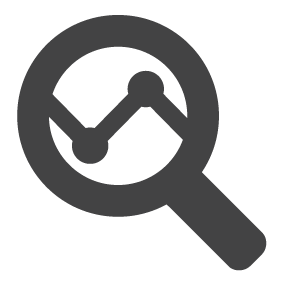Topics: Sleep Apnea, cpap
You have taken the sleep apnea diagnosis test, and identified that you suffer from obstructive sleep apnea (OSA). A common method for treatment is using the CPAP therapy. But how would you know if your treatment is working well enough? Or if the CPAP device is effective at all?
By using the Apnea Hypopnea Index (AHI). It is a helpful measure to diagnose the severity of the condition at baseline and through it, you can track the effectiveness of your treatment.
What is Apnea Hypopnea Index (AHI)?
Apnea hypopnea index (AHI) measurements used to classify the severity of sleep apnea, AHI helps you assess how well your treatment with the CPAP machine is working. This measurement is often presented within the context of a sleep study report. Apnea hypopnea index (AHI) is the number of times per hour of sleep that your upper airway partially or completely collapses, leading to brief arousal or awakening from sleep or a drop in blood oxygen levels.
-
The partial collapse of the airway is called a hypopnea
-
The complete collapse of the airway is called an apnea event
Thus Apnea Hypopnea Index (AHI) is the sum of the number of apneas (pauses in breathing) plus the number of hypopneas (periods of shallow breathing) that occur, on average, each hour.
All this information depicts how many times you breathe shallowly or stop breathing altogether during the night.
How Apnea Hypopnea Index (AHI) Calculated for Sleep Apnea?
The Apnea Hypopnea Index (AHI) is calculated by dividing the total number of events (apneas and hypopneas) from the total sleep time.
Apneas and hypopneas must last at least 10 seconds to count them as events and be associated with a decrease in the blood oxygen levels or cause an awakening. These awakenings may fragment sleep, make it unrefreshing, and lead to daytime sleepiness.
Based on the AHI, the severity of obstructive sleep apnea (OSA) is classified as follows:
-
None/Minimal sleep: AHI < 5 per hour
-
Mild sleep: AHI ≥ 5, but < 15 per hour
-
Moderate sleep: AHI ≥ 15, but < 30 per hour
-
Severe sleep: AHI ≥ 30 per hour
From the AHI rating chart above, we can see that an index less than 5 is considered normal, while AHI from 5 to 15 denotes mild sleep apnea. 15 to 30 is moderate, but patients with AHI greater than 30 have severe sleep apnea.
However this scale is only for adults. As children are less likely to have any sleep apnea episodes, most specialists see an AHI above 1.5 as abnormal in children. They typically need treatment if their AHI is 5 or higher.
Setting a Goal AHI With Your CPAP Treatment
If you have a moderate or severe Apnea Hypopnea Index (AHI) score, you might need to use a CPAP (continuous positive airway pressure) machine while you sleep. You will have a mask to wear over your nose, attached to a machine with a hose. The CPAP blows air into your nose, and that should help keep you from waking up often during the night. It also may record your AHI.
But even during your therapy, depending on the severity of your existing sleep apnea, you may even see AHI Index score greater than four. That’s because any sleep apnea treatment, whether that’s oral devices or CPAP, is designed to reduce and manage you apnea instances, but it’s a gradual progress.
.webp?width=682&height=309&name=apap-vs-cpap-2%20(1).webp)
The important thing here is to make consistently bringing down your AHI Index score as the goal of your CPAP therapy. So if you had an AHI of 36 at the start and CPAP machine helps you bring that down to 9, that’s still significant progress. Because even though your AHI score of 9 qualifies as mild sleep apnea, you are sleeping way better and with markedly less disruptions than at the start of the therapy.
Sit with your healthcare provider or sleep coach to set an AHI goal for your therapy. As long as you continuously bring down your AHI index scores and hit the goal in the course of your therapy, you should consider your treatment to be working well.
However, if you still feel there’s something not quite right with your therapy, or you are not experiencing the benefits as expected, make sure to talk to your sleep coach or healthcare provider. They can help you adjust the therapy - device, air pressure etc. - to ensure that it’s effective for you.
Other Important Measures for Sleep Apnea
-
RDI Sleep Apnea - The respiratory-disturbance index (RDI) reports on respiratory events during sleep like the apnea-hypopnea index. But it includes not only apneas and hypopneas, but also other, more subtle, breathing irregularities. This means a person's RDI can be higher than his or her AHI Index.
-
ODI Sleep Apnea - The oxygen-desaturation index (ODI) attempts to calculate the number of apnea or hypopnea events per hour that lead to an oxygen drop of at least 3%. This is thought to be important in assessing the risk of long-term cardiovascular (high blood pressure, heart attack, and heart failure) or neurocognitive (stroke and dementia) consequences.
ResMed’s CPAP device comes with regular monitoring of your Apnea Hypopnea Index (AHI), and other treatment measurement levels. And you get a dedicated sleep coach who can guide you through the CPAP treatment.
Not sure how that works? Take the ResMed’s CPAP Trial for 2-weeks before starting the CPAP therapy, and see for yourself how effective it is.
